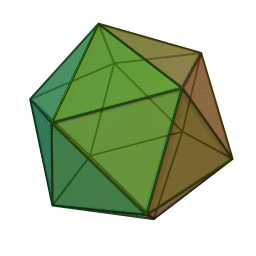 |
LITR 5431 American
Romanticism 2010 Student Midterm Samples #2 short essay |
 |
Veronica Ramirez, Byronic Hero to White Bed sheets: Gothic Elements in
Jane Eyre
While writing about the Romantic elements in
The House of Mirth, snippets of
Jane Eyre kept intruding into my
thoughts, the gothic, the dark, the Byronic hero, morality, gothic color scheme
etc. It became obvious that if I wanted
to explore the Romantic elements in a novel not read during this course, I had
to stop what I was doing and discuss Jane
Eyre. The Romantic elements,
mainly Gothic, in Jane Eyre are in
the setup of the novel, in the characters, in the settings, and in the details.
This British Gothic novel contains many of themes used in American
Romantic texts by dealing with family matters in a Gothic setting. There is so
much in Jane Eyre that I will do a
quick flyby of the major themes and then settle in the “Red-room” scene.
By taking a broad perspective in the novel we see several romantic themes such
as Objective 1a. Romantic spirit or ideology.
Jane Eyre is a romantic
narrative of Jane’s life as she strives to fulfill the desire of an orphan to
have a family, to be loved and be independent. One of the main themes of the
novel Jane Eyre is “desire and loss”,
and we can compare this to The Wide, Wide
World. Jane being sent away
from Gateshead by her abusive family, leaving Lowood and then her flight from
Thornfield all are uprootings and breaking up of the family dynamic.
This loss of the family unit, the upheaval and journey of starting in a
new place, can all be compared to Ellen. We get the insight to the turmoil of
Jane as a child just as we get Ellen’s in the
The Wide, Wide World.
Jane Eyre fulfills the
description of a romantic narrative, but the Gothic Elements in
Jane Eyre is what makes it a perfect
example of a Romantic novel.
The Gothic characters and the gothic setting in
Jane Eyre involve almost every Gothic
element discussed in our course.
Mr. Rochester is clearly a Byronic hero, a dark, brooding, rude character that
the idealistic heroine is attracted to.
Mr. Rochester indeed has a secret sin, by which he is literally haunted
by, which is his previous marriage to Bertha, a stock character of “mad woman in
the attic”. Thornfield is a haunted physical space with supernatural startling
sounds as Bertha screams and “haunts” it. One important detail to note is that
Thornfield as a haunted manor in European gothic contrasts with the gothic
wilderness in American Romantic novels such as
The Last of the Mohicans where the darkness and the supernatural sounds come
from the wilderness in the forest.
While the characters and the setting are typical European gothic, there are
other Gothic elements used in American Romanticism that Charlotte Bronte
employed in Jane Eyre that have the
same meaning and impact.
One scene in Jane Eyre that is a
common scene in Gothic works, not just European, is the red-room scene where
Jane is thrown into the red-room by Mrs. Reed for “hitting” John Reed. The
Gothic elements used here, were discussed in class, such as isolation and gothic
colors. This was a forced isolation, but we see isolation whether self-inflicted
or not, in American Gothic works such as the Roderick Usher’s self-inflicted
isolation and Madeline’s forced isolation in “The Fall of the House of Usher.”
The red-room was “chill” because it has hardly used, it was “silent”
because it was remote from the rest of the house, and solemn due to it being
where Mr. Reed died and where he lay in state. The impact that this room has is
clearly present in that it is the “largest and stateliest chambers in the
mansion” and yet it is hardly used.
The Gothic color interplay of light and
dark with red that is present in the “The Fall of the House of Usher” is also
present in the red-room in Jane Eyre.
The red-room was full of dark furniture that was “darkly polished old
mahogany” or was covered in “crimson cloth”, the carpet was red, and the
curtains were “deep red damask.” The only other prominent color in the bedroom
was white, as the bedcovers “rose high, and glared white” and also a white chair
that looked like a “pale throne”(16). The contrast between the dark red room
with a dark stately almost pyre-like bed with white bed sheets is as dramatic
and gothic as Madeline standing in the doorway “blood upon her white robes.”
There is also a sublime element to the room in terms of the size of the room and
the furniture as “massive pillars of mahogany” where the bed “stood out like a
tabernacle in the centre” in comparison to locking a small child within this
room.
Jane Eyre,
a British Gothic novel that shows the sentimental side of a young scared orphan
and the accompanying horror of her adult life at Thornfield, employs many
European unique elements, such as homes and rooms as a haunted setting, and many
general Gothic elements such as dark/light contrasts.
It has every aspect of a Gothic novel that we have discussed this
semester, such as the Byronic hero, forced isolation or self-inflected isolation
and a physical haunting and a psychological haunting.
